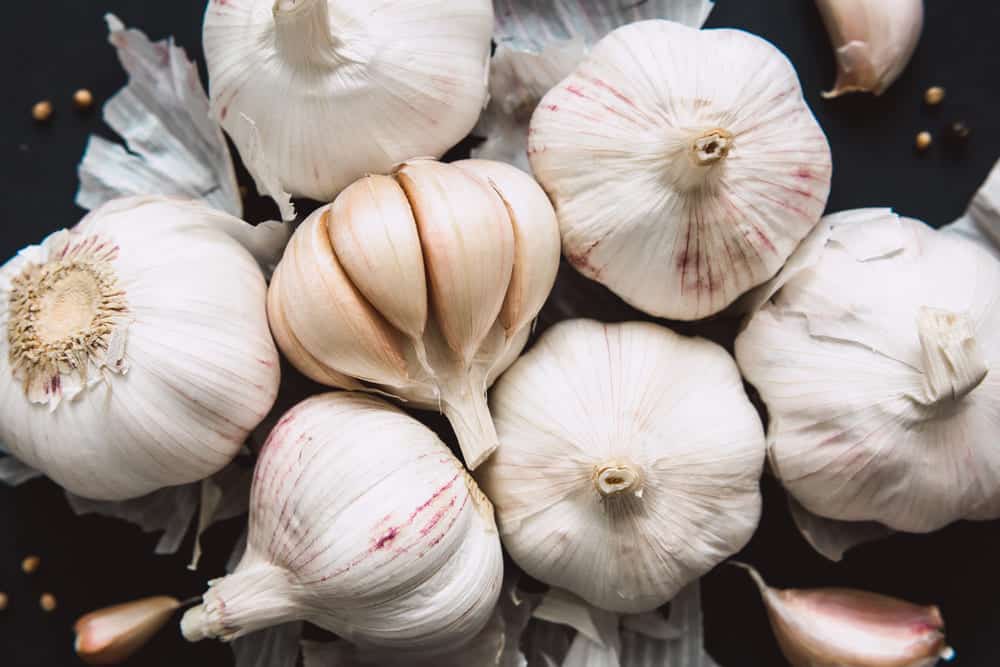
If you look to cook, you would be aware of the fact that garlic is an essential part of the kitchen. Garlic is known to be the oldest crop and is widely used for culinary purposes, and has a higher nutritious value.
For this reason, people are growing garlic even in the home gardens. However, it’s important to know the difference between dehydrated garlic vs. fresh garlic. So, let’s check out the details!
Dehydrated Garlic vs Fresh Garlic
Dehydrated Garlic
To begin with, dehydrated garlic is basically the dry garlic powder that is obtained from the garlic bulbs. It is generally popular for the pleasant and strong flavor (allicin is responsible for this pleasant yet pungent flavor). The dehydrated garlic is suitable for medical purposes as well as culinary purposes. When it comes down to baking, dehydrated garlic can be added to pizzas, rolls, and bread.
The most intriguing thing about dehydrated garlic is available in a variety of forms, such as slices, grits, powdered garlic, and flakes. The garlic slices have a size smaller than 4mm, grits are available in 0.25mm to 1.25mm, flakes are available in 1.25mm to 4mm, and powdered garlic is available in size smaller than 0.25mm. It is widely used as a condiment in baking recipes.
The baking recipes include garlic bread, pizza dough flavoring, rolls, and croutons. Moreover, it can be added to any recipe where you want to add garlic flavor. As for flaked or minced garlic, it adds texture to the baked foods. To illustrate, it can be added while preparing the recipe or on the top. When we talk about flavor, there are significant differences between dehydrated garlic and fresh garlic.
For intake, the dehydrated garlic has a sweeter taste and won’t have a biting flavor. Some people also feel the mildly roasted flavor (it comes from dehydration). At this point, it’s essential to note down that dehydrated garlic, and fresh garlic cannot be substituted for each other since there is a difference in flavor and smell. Also, keep in mind that the nutrition value of dehydrated garlic is less than fresh ones.
For the mort part, dehydrated garlic is versatile, which makes it suitable for making spice blends and dry rubs. Some people also sprinkle the powdered form on popcorns and French fries. Lastly, we love the flavor it proposes when slathered with butter on bread toasts. In case you are wondering about the availability, dehydrated garlic is pretty easy to find in supermarkets and grocery stores.
Fresh Garlic
First things first, fresh garlic is nutritious since one ounce of fresh garlic has calcium, protein, iron, and selenium. In addition, it has a higher vitamin C content. It’s pretty obvious that fresh garlic has a pungent flavor and taste, which means it must be added in smaller amounts to bring out the pleasant flavor. Also, using too much fresh garlic can upset the digestive system.
When you have fresh garlic, it has to be browned, crushed, or minced for cooking purposes but don’t burn it. The taste of garlic also depends on how much you cook it. Generally, fresh garlic cloves have perfect juiciness and a vibrant flavor. Garlic is harvested in early summers, and it must be stored in dark, cool, and airy areas. This storage will ensure that fresh garlic lasts for months.
However, long-term storage of fresh garlic will lose the moisture, so use it within a month. Some fresh garlics are available with green shoots, but those aren’t safe to eat. To illustrate, it’s best to use fresh garlic with multi-layered and tight skin. If you have fresh garlic, it will cook quicker as compared to slightly dry or old garlic.
When you are using fresh garlic for cooking, it’s best to keep the stove’s flame low and gentle because it can burn the garlic. Moreover, if you are frying or sauteing fresh garlic, add it during the mid. In case you want to use fresh garlic for meat or grilling, we suggest that you make a puree. For making puree, you can add a pinch of kosher salt as well and add it to rustic sauces.
With fresh garlic, you can cut them into half and add to broths and braises. Moreover, you can use the thin garlic slices for garnishing (sauté them in olive oil first). Personally, we love to make green mayonnaise with fresh garlic (it makes a perfect sandwich spread).